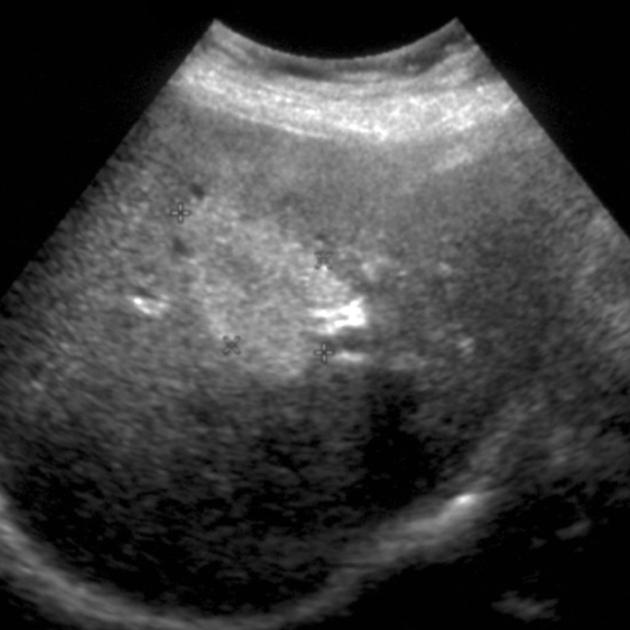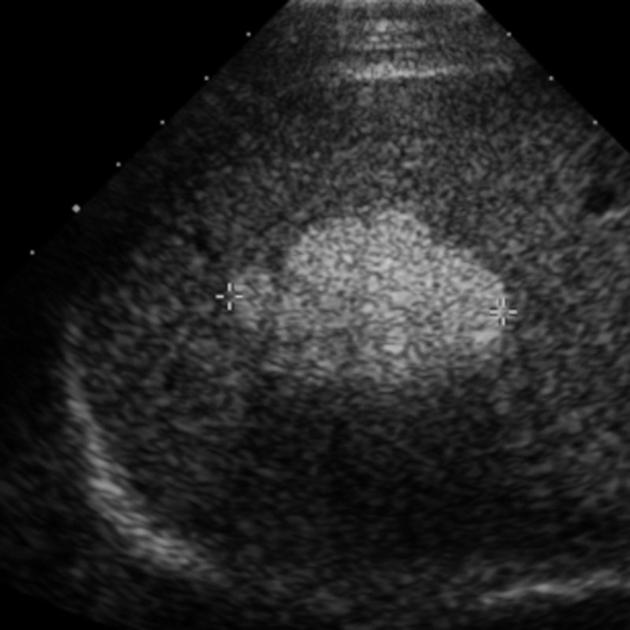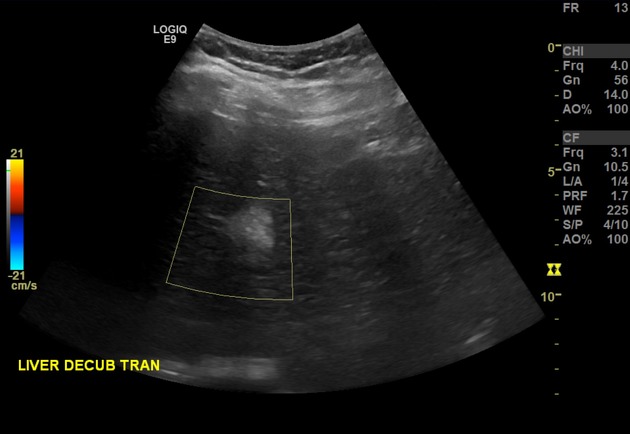A hyperechoic liver lesion also known as an echogenic liver lesion, on ultrasound can arise from a number of entities, both benign and malignant. A benign hepatic hemangioma is the most common entity encountered, but in patients with atypical findings or risk for malignancy, other entities must be considered.
Benign
hepatic hemangioma: commonest hyperechoic liver lesion by far (present in 4% of the population) 1,4
hepatic adenoma with high fat content
-
focal fatty change: focal hepatic steatosis
rarely: multifocal hepatic steatosis
Malignant
-
colorectal carcinoma (up to 50% of hyperechoic liver metastases)
treated breast cancer
some sarcomas
hepatocellular carcinoma: particularly in a cirrhotic liver 3
The presence of hyperechogenicity can be a result of fat within a liver lesion 2, although some non-fat-containing lesions may also be echogenic (e.g. hepatic hemangioma).
On this page:
Radiographic features
Ultrasound
hypoechoic halo sign: considered a feature suggestive of malignancy
Some suggest pulse inversion harmonic imaging with quantitative evaluation as being useful in facilitating the differential diagnosis of hyperechoic focal liver lesions, where a lesion-liver ratio of ≥1 being predictive of a benign nature, assuming that malignant lesions show a ratio of <1 1.
Practical points
If a single, well-defined, homogeneous, echogenic mass is found in an asymptomatic patient, without a history of malignancy and without risk factors for liver tumors, then a diagnosis of hemangioma can be made on ultrasound without the need for another test 5. If an appropriate clinical history is not available, then a wider differential is appropriate. A "typical hemangioma" has been described as <3 cm 6, although this distinction appears to have originally meant to distinguish between "typical" and "cavernous" hemangiomas.









 Unable to process the form. Check for errors and try again.
Unable to process the form. Check for errors and try again.